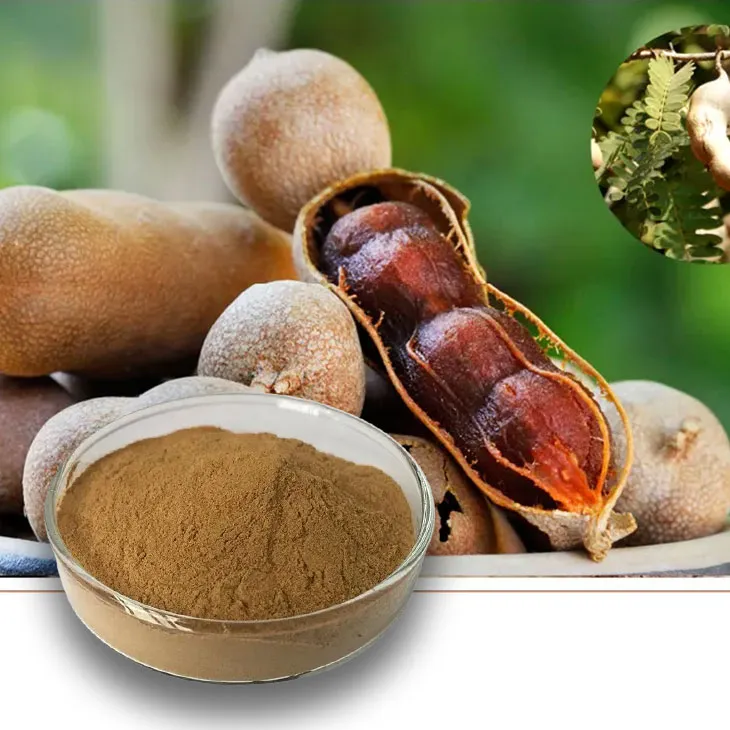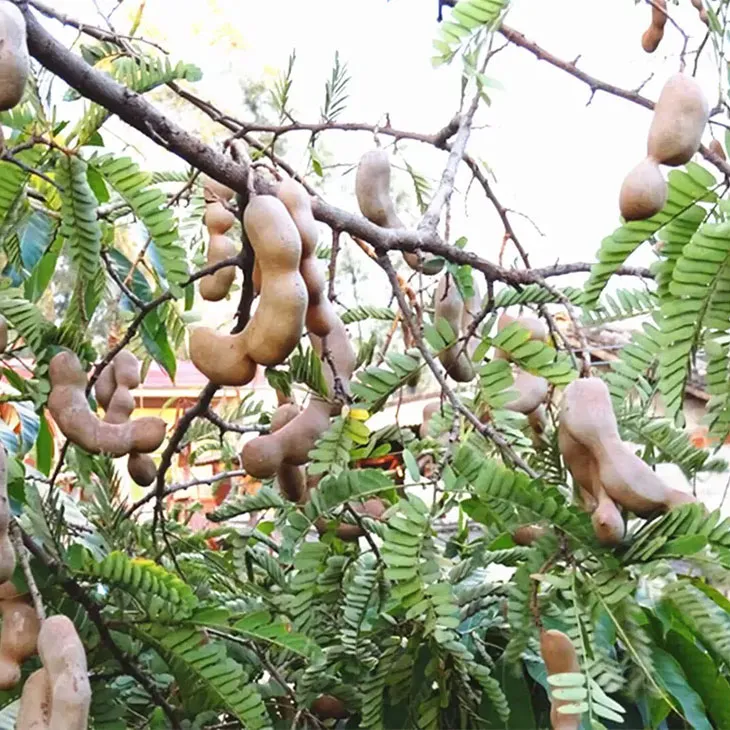- 0086-571-85302990
- sales@greenskybio.com
The process of extracting characteristic components of tamarind from tamarind extract powder.
2024-11-29

1. Introduction
Tamarind, a tropical fruit, has been widely used in various industries due to its unique properties. Tamarind extract powder is a convenient form for further processing to obtain its characteristic components. The extraction process is crucial for fully exploiting the potential of tamarind. This article will discuss in detail the multi - step process of extracting specific components from Tamarind extract powder.

2. Preparation of Tamarind extract powder
Before the extraction process, proper preparation of the tamarind extract powder is essential.
2.1 Ensuring Homogeneity
The powder should be made as homogeneous as possible. This can be achieved through proper mixing techniques. Uniform distribution of the components within the powder is vital for consistent extraction results. If the powder is not homogeneous, different parts of the sample may yield different amounts or qualities of the characteristic components during extraction.

3. Main Extraction Approaches
There are two main extraction approaches: liquid - liquid extraction and solid - phase extraction.
3.1 Liquid - Liquid Extraction
- Solvent Selection: The choice of solvents is a critical factor in liquid - liquid extraction. Different solvents have different affinities for the characteristic components of tamarind. For example, polar solvents like water or ethanol may be suitable for extracting water - soluble components such as certain sugars or organic acids present in tamarind. Non - polar solvents, on the other hand, may be used to extract lipid - related components. A proper solvent or a combination of solvents needs to be determined based on the nature of the components to be extracted.
- Agitation: After adding the solvents to the tamarind extract powder, proper agitation is necessary. This helps in increasing the contact between the powder and the solvents, facilitating the transfer of the characteristic components from the solid phase (powder) to the liquid phase (solvent). Gentle agitation can be achieved using a magnetic stirrer or by shaking the mixture in a sealed container. However, excessive agitation may lead to emulsification in some cases, especially when using immiscible solvent pairs. Emulsification can make the separation of the two liquid phases difficult, so it should be avoided.
- Separation of Phases: Once the agitation is complete, the two liquid phases need to be separated. This can be done using techniques such as centrifugation or decantation. Centrifugation is a more efficient method as it can quickly separate the two phases based on their density differences. The upper or lower phase, depending on the density of the solvents used and the location of the extracted components, is then collected for further processing.
3.2 Solid - Phase Extraction
- Adsorbent Material Selection: In solid - phase extraction, the choice of adsorbent material is of utmost importance. Different adsorbent materials have different adsorption properties towards the characteristic components of tamarind. For example, silica - based adsorbents are commonly used for a wide range of compounds. They can adsorb polar and non - polar components depending on their surface modification. Ion - exchange resins can be used to specifically adsorb ionic components present in tamarind, such as certain minerals or charged organic compounds. The selection of the adsorbent material should be based on the type of components to be extracted and the desired selectivity.
- Sample Loading: The tamarind extract powder is usually dissolved or suspended in a suitable solvent and then loaded onto the solid - phase extraction column or cartridge containing the adsorbent material. The flow rate of the sample loading should be carefully controlled. A too - fast flow rate may lead to incomplete adsorption of the components, while a too - slow flow rate may be time - consuming and may also cause some components to diffuse back into the solution.
- Elution: After the sample has been loaded and the unwanted components have been retained on the adsorbent, the characteristic components need to be eluted. The choice of elution solvent depends on the strength of adsorption of the components on the adsorbent. A more polar elution solvent may be used to elute polar components from a non - polar adsorbent, and vice versa. The elution process should be optimized to ensure high recovery of the characteristic components.

4. Post - Extraction Steps
After the extraction, there are usually additional steps to obtain the final characteristic components in a more purified and concentrated form.
4.1 Concentration
- Evaporation: One common method for concentration is evaporation. If the extracted components are in a liquid solvent, the solvent can be evaporated under reduced pressure or at an elevated temperature (while being careful not to damage the components). Rotary evaporators are often used for this purpose. By reducing the volume of the solvent, the concentration of the characteristic components in the remaining solution is increased.
- Ultrafiltration: Ultrafiltration can also be used for concentration, especially for separating and concentrating macromolecular components. Membranes with specific pore sizes are used to retain the larger components while allowing the smaller solvent molecules and unwanted impurities to pass through. This method is more selective compared to simple evaporation and can help in obtaining a more purified concentrated product.
4.2 Drying
Once the concentration step is complete, drying may be necessary to obtain the characteristic components in a solid form. Different drying methods can be used.
- Air Drying: This is the simplest method, where the concentrated solution or wet product is exposed to air at a suitable temperature and humidity. However, air drying may be time - consuming and may also introduce contaminants from the air. It is more suitable for less sensitive components.
- Vacuum Drying: Vacuum drying is a more efficient method as it can remove moisture at a lower temperature compared to air drying. This is beneficial for components that are sensitive to high temperatures. By reducing the pressure, the boiling point of the solvent or water in the product is lowered, allowing for faster drying without causing thermal degradation.
- Freeze Drying: Freeze drying, also known as lyophilization, is a high - quality drying method. The product is first frozen and then the water or solvent is removed by sublimation under vacuum. This method can preserve the structure and activity of the characteristic components to a large extent, especially for bioactive components. However, it is also a more expensive and complex drying method.

5. Importance in Industries
- Food Industry: In the food industry, the extraction of characteristic components from tamarind extract powder is important. For example, the extraction of natural flavors and sweeteners can be used to enhance the taste of food products. Tamarind - based additives can be used in candies, beverages, and sauces, providing a unique flavor profile.
- Pharmaceutical Industry: Tamarind contains certain bioactive components that may have potential pharmaceutical applications. Extracting and purifying these components can be used in the development of drugs or nutraceuticals. For example, some components may have antioxidant or anti - inflammatory properties, which can be beneficial for treating various diseases.
- Cosmetic Industry: The characteristic components of tamarind can also be used in the cosmetic industry. They can be incorporated into skincare products such as creams and lotions. Components like vitamins and organic acids present in tamarind may have moisturizing, exfoliating, or anti - aging effects on the skin.
6. Conclusion
The process of extracting characteristic components from tamarind extract powder involves multiple steps, from the proper handling of the powder to the main extraction approaches such as liquid - liquid extraction and solid - phase extraction, followed by post - extraction steps like concentration and drying. Understanding this process is essential for industries that aim to utilize tamarind's unique properties. Each step requires careful consideration of various factors such as solvent selection, agitation, adsorbent material choice, etc. to ensure high - quality extraction and obtain the desired characteristic components for different applications.
FAQ:
Q1: What is the first step in extracting characteristic components from tamarind extract powder?
The first step is to properly handle the powder to ensure its homogeneity.
Q2: What are the main extraction approaches for tamarind - specific components from the powder?
The main extraction approaches are liquid - liquid extraction and solid - phase extraction.
Q3: What are the key factors in liquid - liquid extraction?
In liquid - liquid extraction, the key factors are the right combination of solvents and proper agitation.
Q4: Why is the choice of adsorbent material important in solid - phase extraction?
In solid - phase extraction, the choice of adsorbent material is vital because it directly affects the extraction efficiency and selectivity of the characteristic components.
Q5: What may be involved after the extraction process?
After extraction, concentration and drying steps may be involved to obtain the final characteristic components.
Related literature
- Extraction and Characterization of Bioactive Compounds from Tamarind (Tamarindus indica L.)"
- "Optimization of Tamarind Component Extraction: A Comprehensive Review"
- ▶ Hesperidin
- ▶ Citrus Bioflavonoids
- ▶ Plant Extract
- ▶ lycopene
- ▶ Diosmin
- ▶ Grape seed extract
- ▶ Sea buckthorn Juice Powder
- ▶ Fruit Juice Powder
- ▶ Hops Extract
- ▶ Artichoke Extract
- ▶ Mushroom extract
- ▶ Astaxanthin
- ▶ Green Tea Extract
- ▶ Curcumin
- ▶ Horse Chestnut Extract
- ▶ Other Product
- ▶ Boswellia Serrata Extract
- ▶ Resveratrol
- ▶ Marigold Extract
- ▶ Grape Leaf Extract
- ▶ New Product
- ▶ Aminolevulinic acid
- ▶ Cranberry Extract
- ▶ Red Yeast Rice
- ▶ Red Wine Extract
-
Curcumin Extract
2024-11-29
-
Beetroot Powder
2024-11-29
-
Ginger Extract
2024-11-29
-
Uridine-5'-monophosphate Disodium salt
2024-11-29
-
Passionflower Extract
2024-11-29
-
Shikonin
2024-11-29
-
Grape Leaf Extract
2024-11-29
-
Saw Palmetto Extract
2024-11-29
-
Cassia Seed Extract
2024-11-29
-
Almond Extract Powder
2024-11-29





















